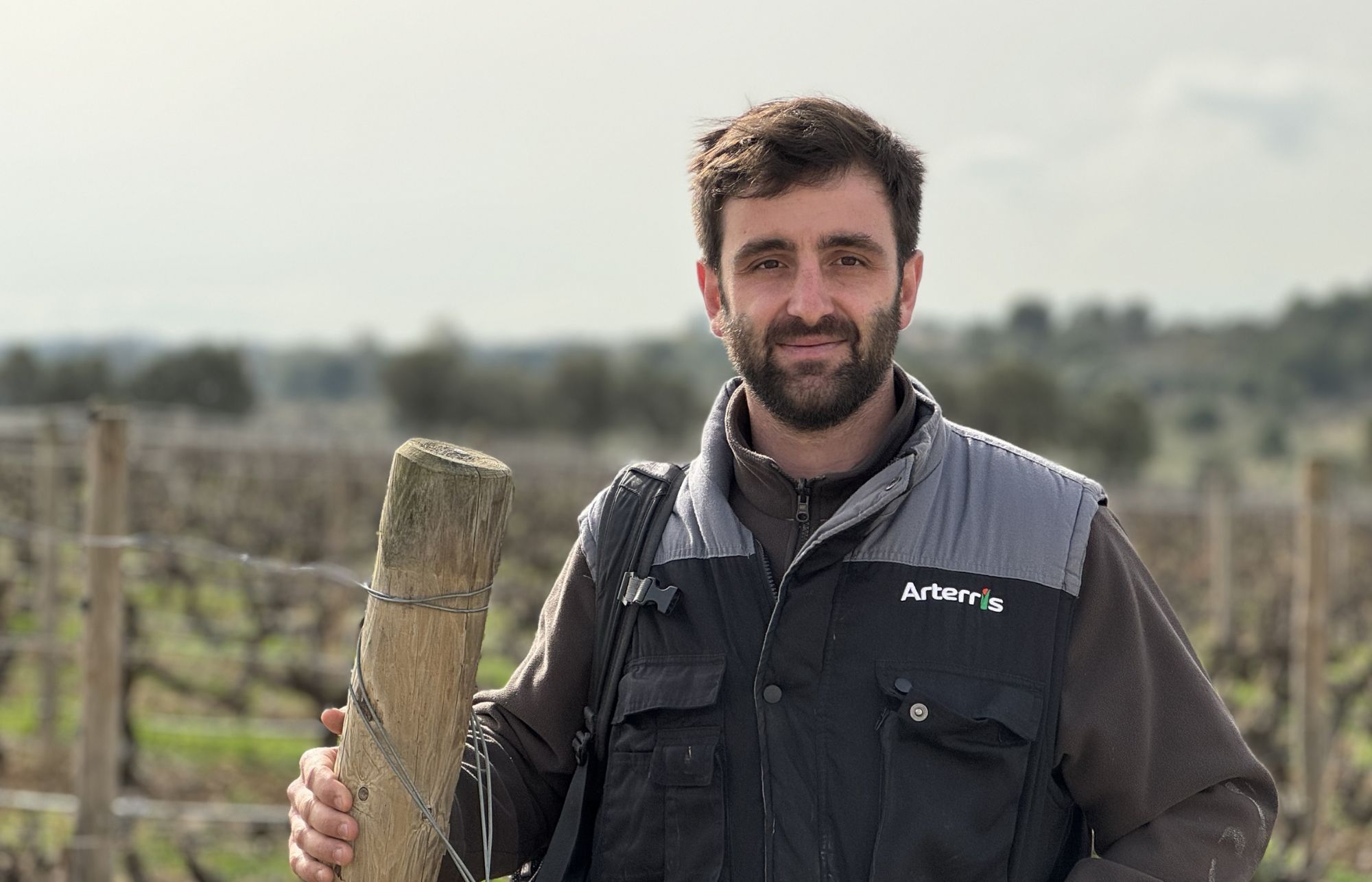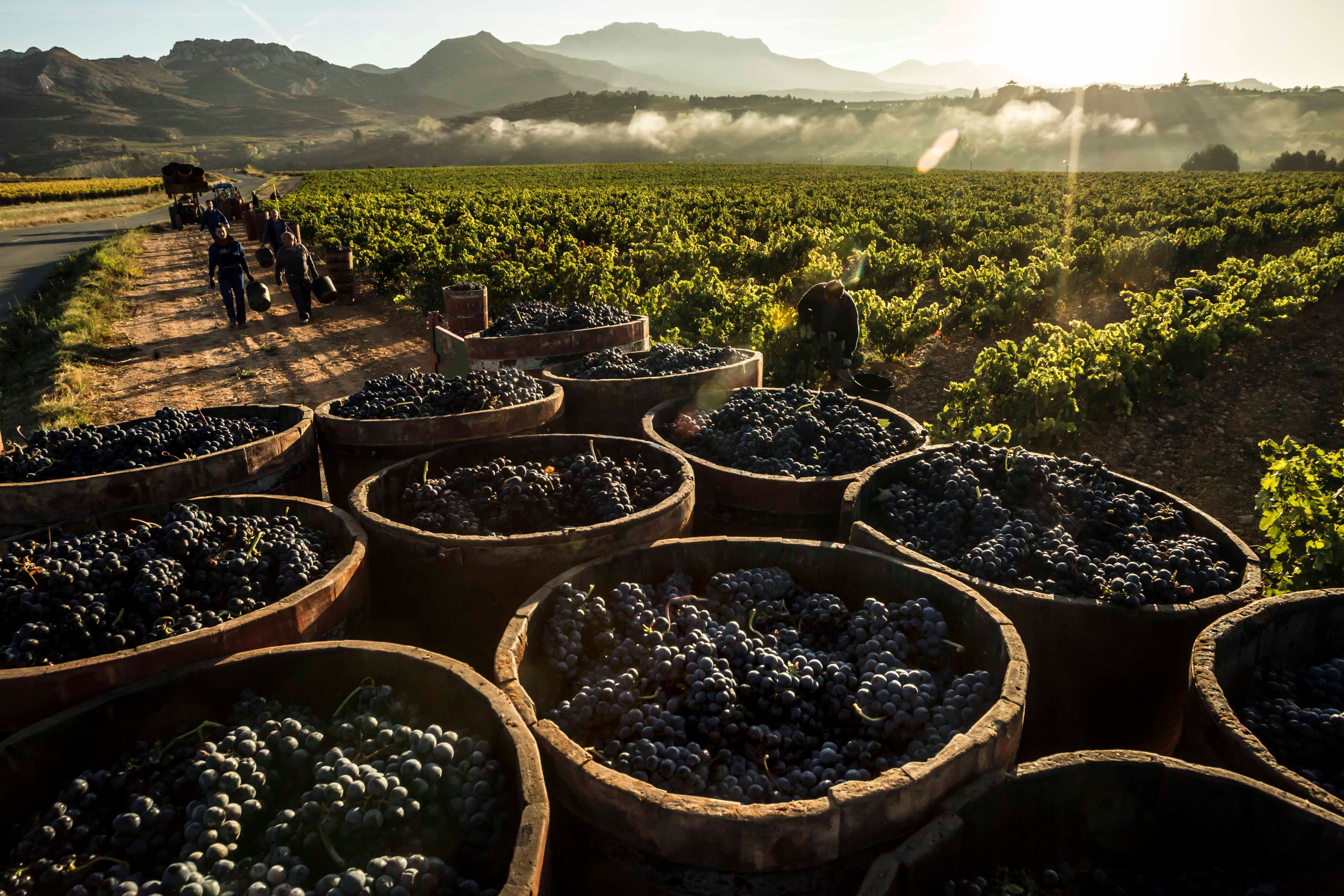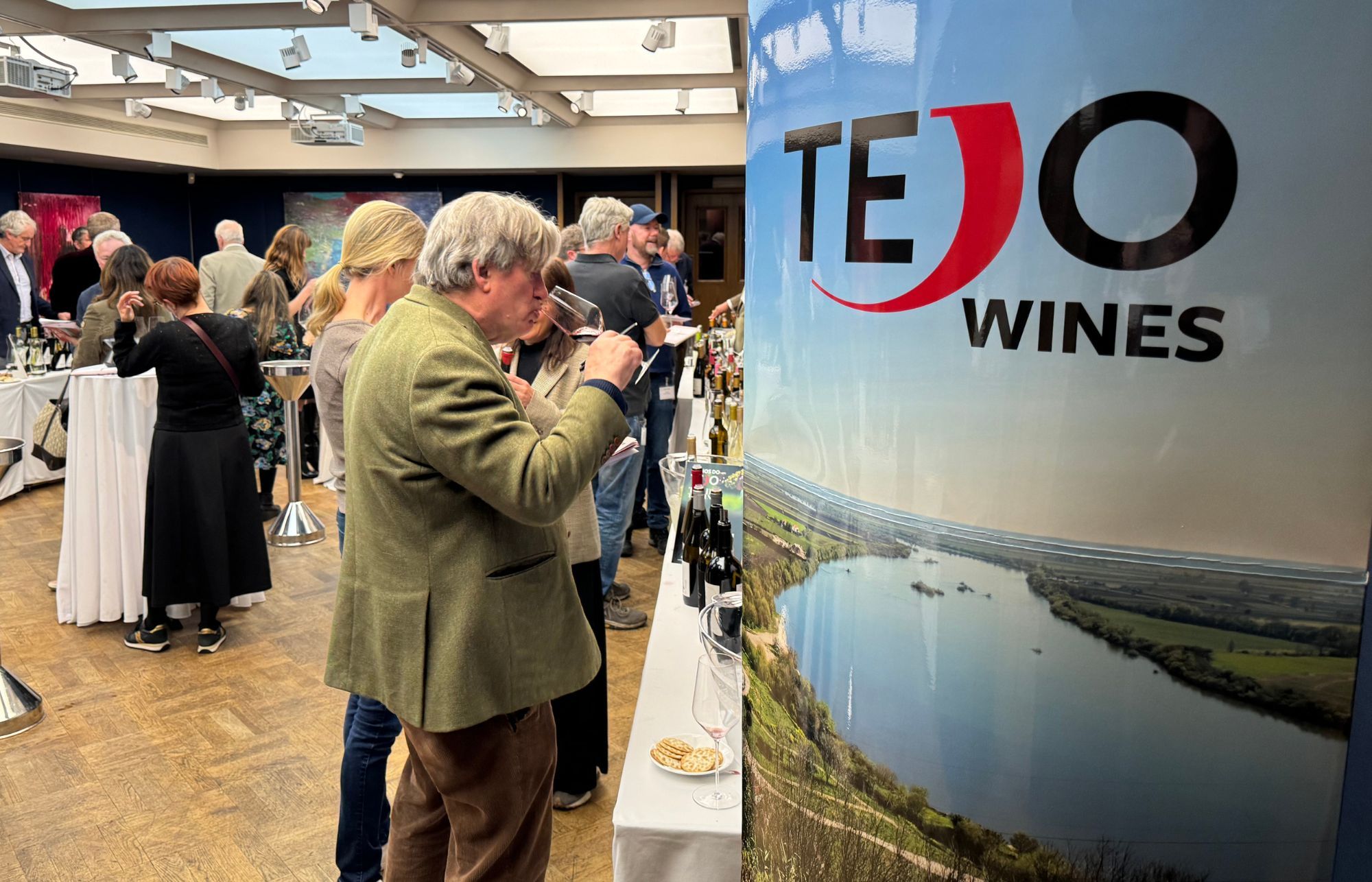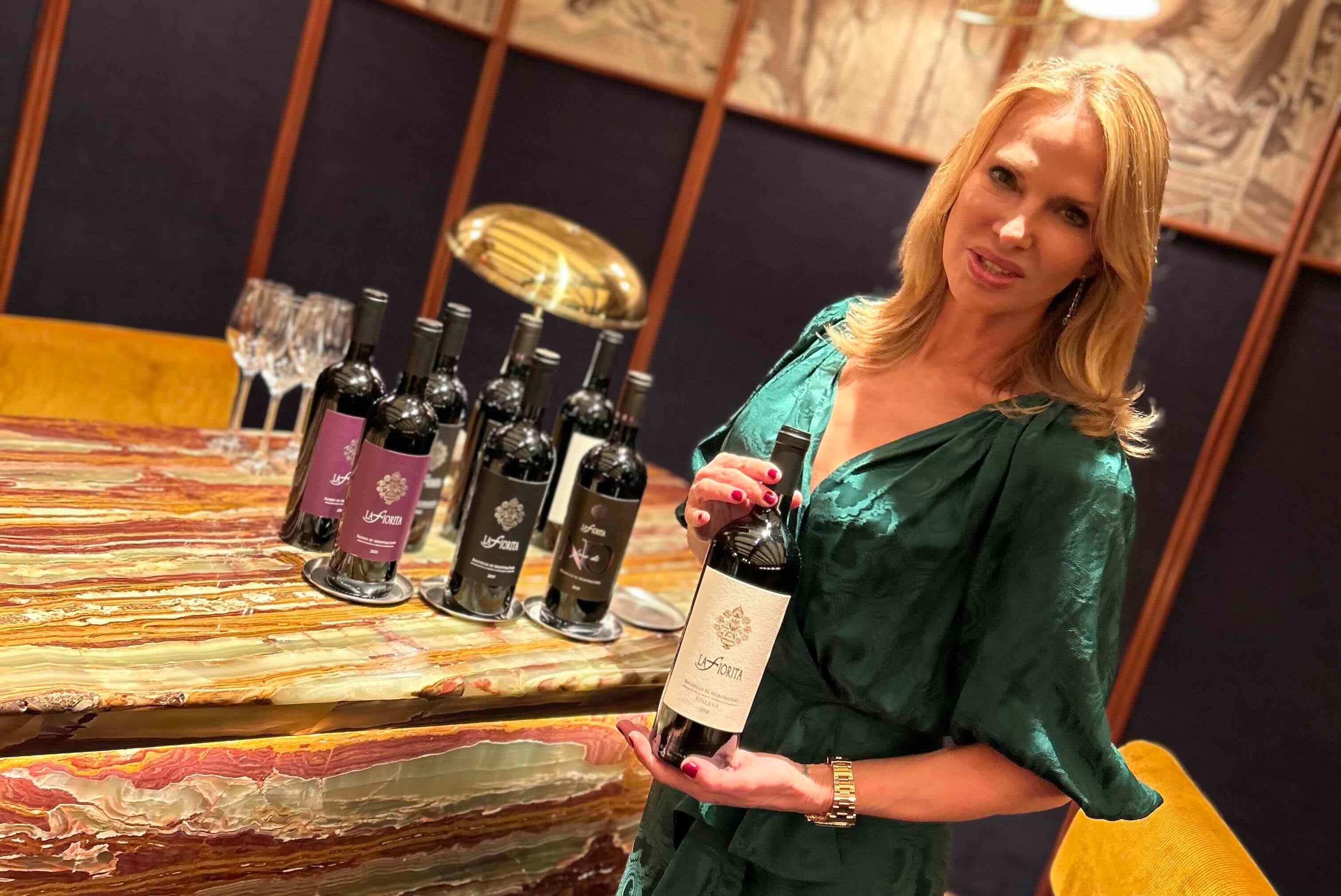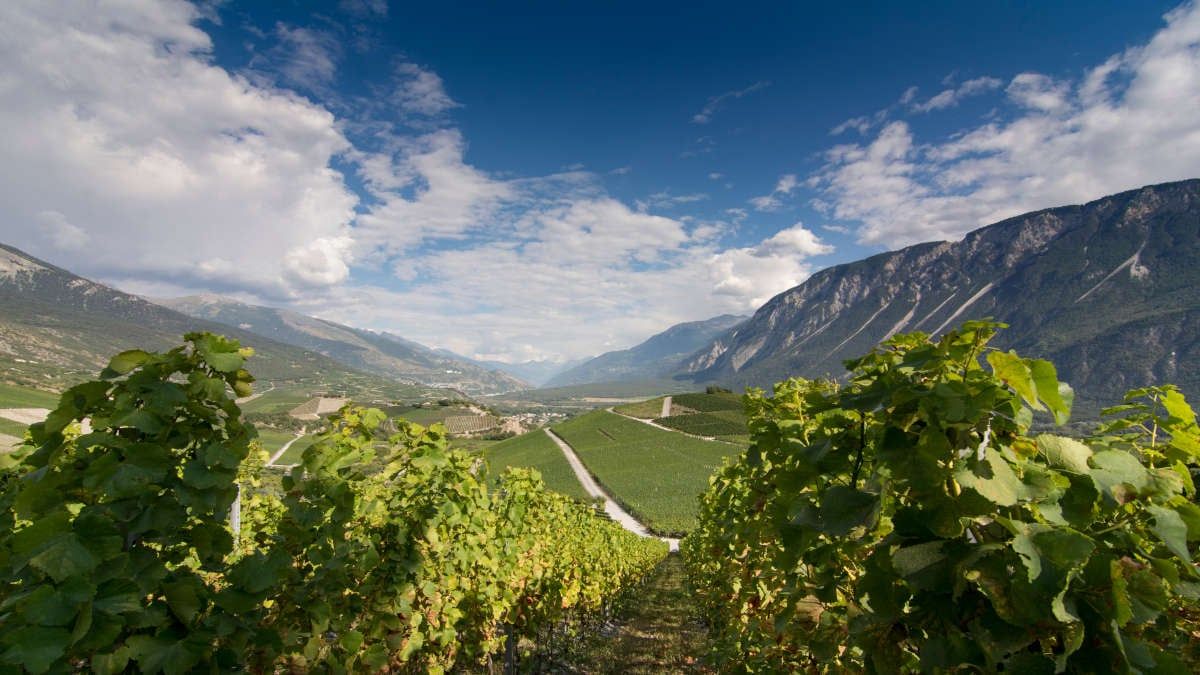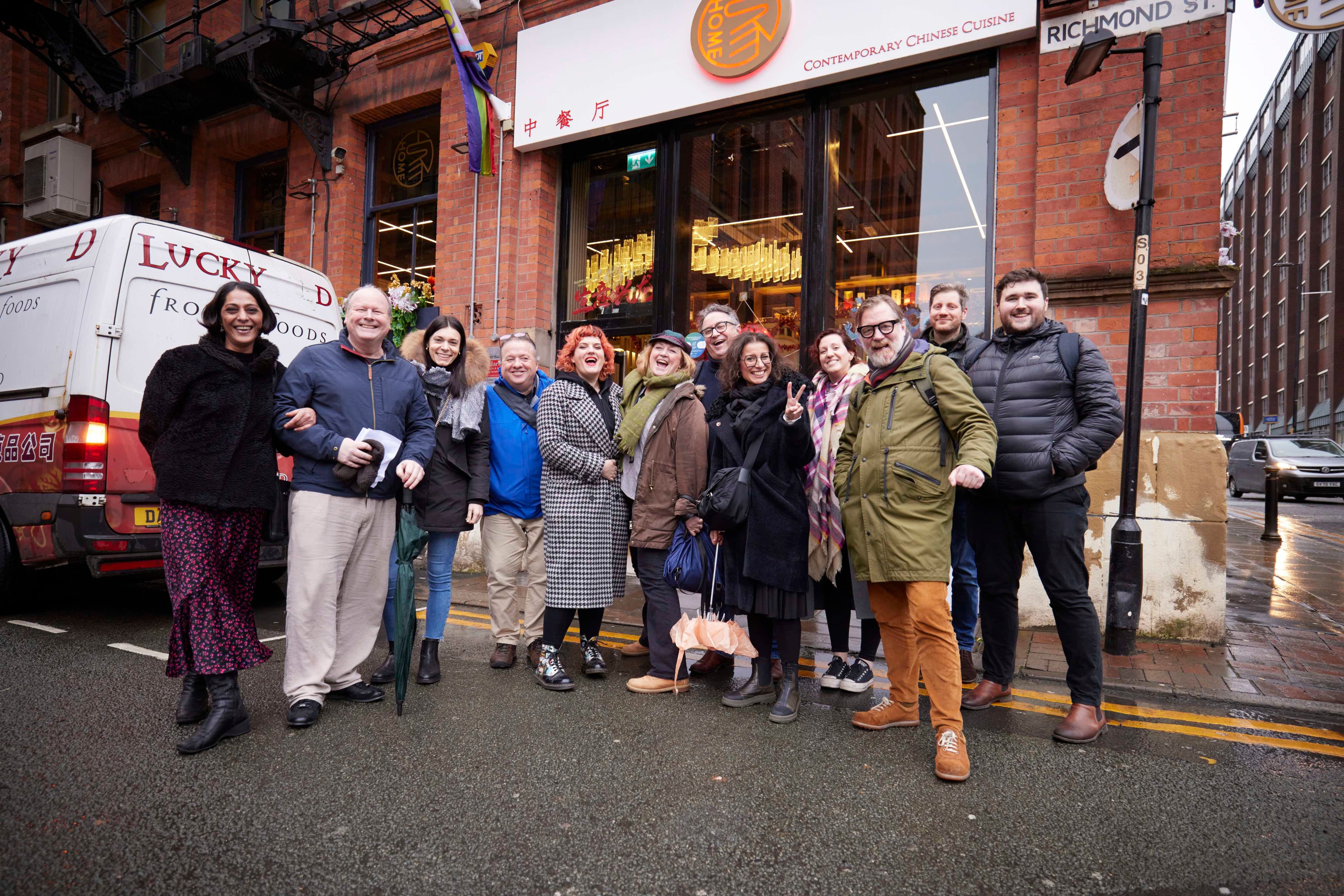On most press trips I go on, I tend to be on the flight home typing up my notes and forming an idea in my head of what really stood out for me that’s worth reporting on. There might be one or two really stand out take-homes. You might get a couple more, in which case you’re pondering the best direction to go. Coming back from three days in Roussillon, however, and I’m stumped.
I would never have professed to be any kind of expert in Roussillon before I went. Like many of you, I’ve been through the WSET journey, I’ve read a few snippets here and there, and I’ve been lucky enough to taste through and write up the Sud De France tastings when they come to London. But nothing prepared me for the eye-opening differences in culture, landscape, and quality of production that altered any previous perceptions I had of this unique region.
A potted history of the wines of Roussillon
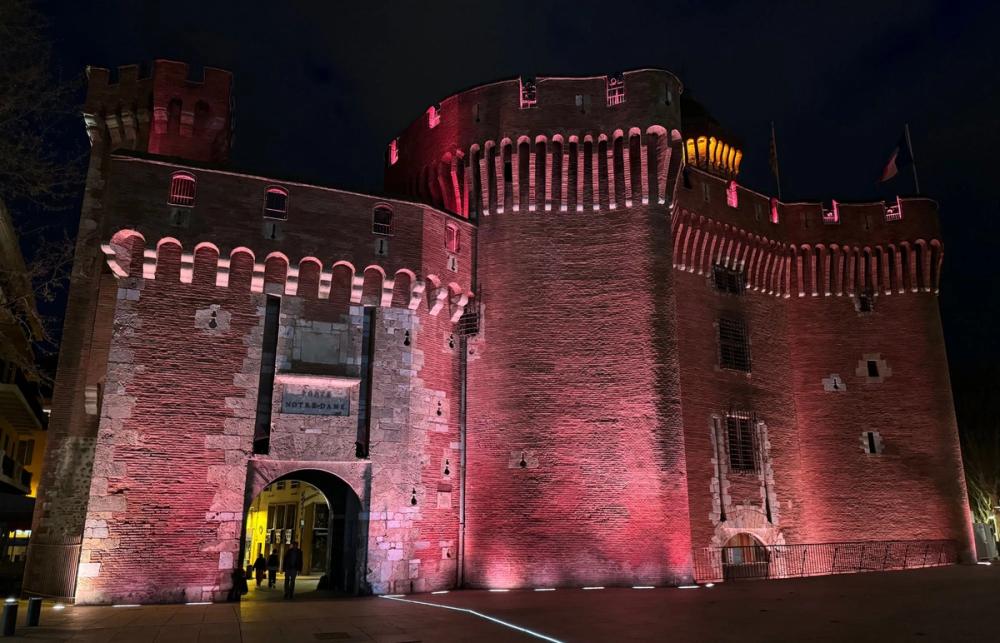
The fort at Perpignan
During our first night in Perpignan, CIVR (Conseil Interprofessional des Vins du Roussillon) director Eric Aracil began with a fascinating historical tour de force.
Roussillon is an ancient wine making region. Its two major exports since the ancient Greeks established bases there had been iron ore (hence the “Rou” part of the name) and wine. This was accelerated in the middle-ages when physician (and local celebrity to this day) Dr Arnaud De Villeneuve first used an alembic still to create the medicinal wine that would become Vin Doux Naturels in the 1280s.
The region is dominated to the north, west, and south by mountain ranges, and to the east by the Mediterranean. The northern Corbières mountain range acted as a protective shield in the late nineteenth century from the spread of phylloxera.
The winemakers of Roussillon could still supply a wine-starved market, so that by the 1900s when phylloxera finally arrived, they had the financial resources (and by then also the knowledge of what phylloxera was) to replant the vineyards and move forwards.
To outside observers, the 1970s brought the biggest boon of all. As French colonies in North Africa claimed independence, the French government created the Languedoc-Roussillon in order to produce the volumes of colourful, alcoholic wines to supply the military (and winemakers further north) with the production lost from the likes of Algeria and Morocco.
But the demand for very specific styles of wine was not necessarily a useful thing. “Roussillon was never adapted to that style of production,” stated Aracil. “If you combine PDO and PGI wines, we have the smallest average yields in France. We create terroir specific wines.”
That view has been reinforced by the large decrease in planted vineyards since the 1980s, as bulk producers realised this was not the land for them. Roussillon is now a region of 417 estates, 28 co-ops and a handful of négociants managing 20,700 hectares of vineyards, around a third of the plantings of 40 years ago. As Jean-Marc Lafage, owner of Domaine Lafage in Canet-en-Roussillon, once said: “Roussillon is not for the faint hearted!”
The reputational damage is, unfortunately, still felt keenly to this day. “Our best wines are hard to sell,” noted Didier Rodriguez of Domaine Sol Payré. “We have the potential for great wines, but the export market still doesn’t know what to make of us.”
Catalan culture
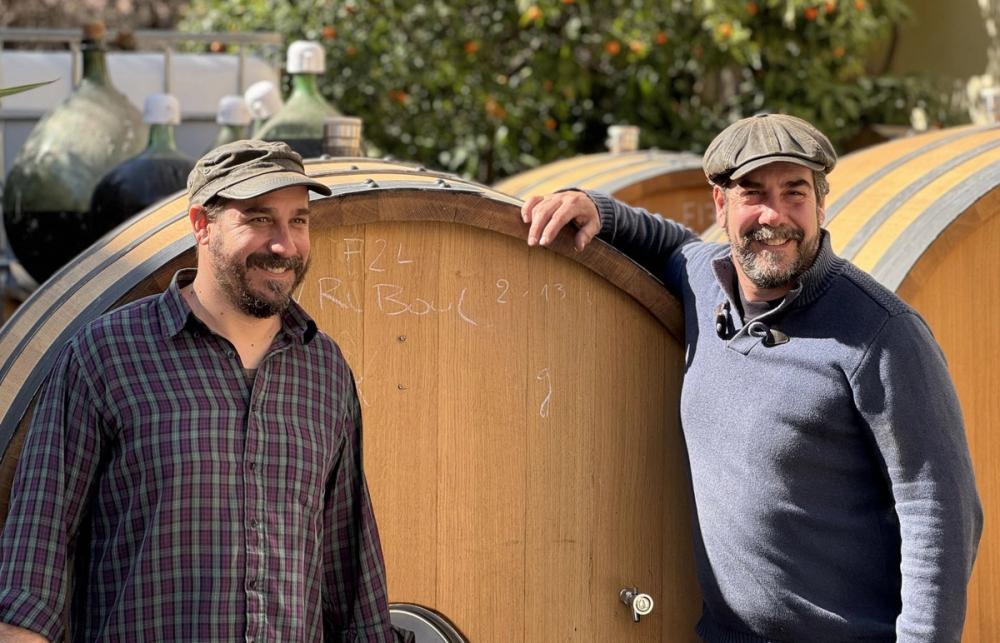
“We won’t work with any importer that would refer to us as from Languedoc-Roussillon.” – Benoit and Sebastien Danjou-Banessy
It’s very clear very quickly that Roussillon is first and foremost seen by the locals as the northern part of Catalunya, rather than the southern part of anywhere in France.
Our flights were in and out of Barcelona airport for a start, and as the days progressed, we became very used to hearing conversations that married both French and Catalan interchangeably.
“Our inspiration has always been our grandfather, with whom we spoke Catalan,” revealed Benoit Danjou-Banessy, who runs the Domaine of the same name with his brother Sébastien in Espira D’Agly. “In fact, I only really know the name of the vineyard tools we use in Catalan!”
It again questions the promotional tie-up with Languedoc. The Corbières mountains, with their range of imposing Cathar castles, gives a very visible, physical border to the north. But this obvious difference in culture and winemaking ethos highlights the basic nature of ‘Languedoc-Roussillon’. “Of course, it’s fantastically oversimplified,” proceeded Danjou-Banessy. “We might as well have split it as North and South France!”
The largest IGP in the region is IGP Côtes Catalanes.
“I like to use it on labels,” mused Wendy Wilson of Domaine La Soula, “it reminds us where we’re from.” But it’s not always an easy moniker. “Part of our rebrand is because we’d go round the world trying to sell our wines, and people were expecting us to be Spanish,” remembered Armen Ratchiyan of VICA, previously Vignerons Catalans. “We’re very proud to be Catalan, but there is an obvious confusion.”
There is also the difficulty of workers arriving in the region from other parts of France.
“We love using Côtes Catalanes as it really reflects the culture here. But it’s not easy to get used to,” joked Laura Sicard of Cave Dom Brial. “Catalans are like coconuts, hard and stubborn on the outside, but soft and gentle when you get to know them!”
For sure, however, the winemakers of Roussillon are in no doubt. Roussillon should be thought of as a very separate region. “We’re more similar to Penedès than Languedoc,” added Danjou-Banessy. “I won’t work with any importer that would refer to us as from Languedoc-Roussillon.”
Huge patchwork of terroir and altitudes
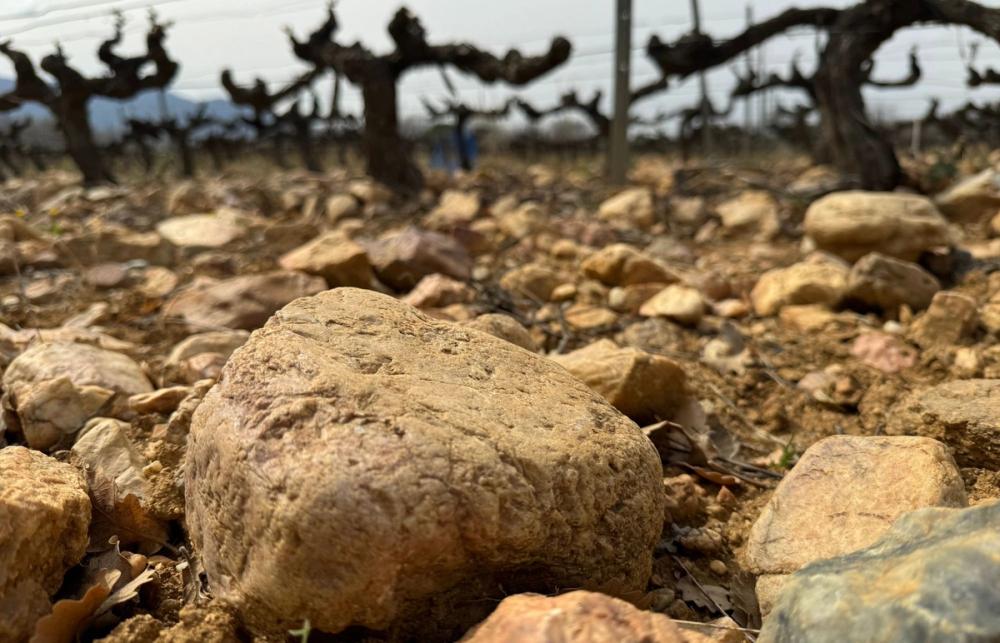
The rocky soils at Sol Payré
Mountains dominate the landscape. They are as impressive as they are imposing. It means vineyards range from sea level in areas like Canet-en-Roussillon to over 1000m inland.
The foothills of the Corbières Mountains in the north are home to AOC Maury Sec (and Doux), as well as the named Côtes Du Roussillon Villages areas of Tautavel, Lesquerde, Latour-de-France and Caramany, highlighting the vital role altitude plays in the production of quality wine.
The newly christened (2017) AOC Côtes Du Roussillon Villages Les Aspres is further south as the land rises towards the iconic Mont Canigou.
Dominique Génot runs Mas Llossanes near Tarerach, with his wife Solenn. After a decade running Château Giscours’ Tuscan property, Caiarossa, they returned to France in 2015.
“Roussillon had good terroir, good prices, and the Mediterranean sun which I really wanted having enjoyed my time in Tuscany,” smiled Génot. “We now manage 11 hectares between 550m and 700m. In 2015 these vineyards were seen as less desirable, especially for yields. But the trend for altitude, set by the likes of Chapoutier’s Bila-Haut, is clearly increasing for quality minded producers.”
There are three main rivers, whose valleys cut grooves throughout the region producing further aspects for grape growers to exploit. The northern River Agly, the central River Têt and the southern River Tech also act as intra-regional markers that often can be used as a point of reference when talking about the winds and the soils prevalent in each region.
Roussillon is famous for being subject to strong winds that blow one day in every three throughout the year. There are eight main winds gusting in all directions bringing warmth or freshness, dryness or humidity. The famous winds are the Tramontane from the North-West, and the Marinada from the sea, but the relative effects of these winds are rarely constant and keep vineyard managers on their toes.
“We’re experiencing a bit less of the Tramontane in recent years,” noted Hervé Bizeul of the fabulous Clos Des Fées in Rivesaltes. “Instead, we’re getting more of the Sirocco winds from the African deserts, which is warmer and drier, to which we need to adapt.”
The soils of Roussillon are fascinating. Previously under the sea, the mountains and valleys were hewn by large movements in the tertiary and quaternary periods leaving exceptionally diverse soil formations.
Generalisations do exist. The Fenouillèdes ranges in the north-west, down into the Agly Valley are known for sandy, granite, gneiss and famous dark schists giving spicy, salty, linear wines. Iron rich red clay and limestone dominate the Corbières foothills give deeper, more structured wines. Rocky alluvial soils cover the river valley terraces for minerality and warmth. What is clear is that there are distinct styles and terroir everywhere you look.
Grape varieties divide opinion
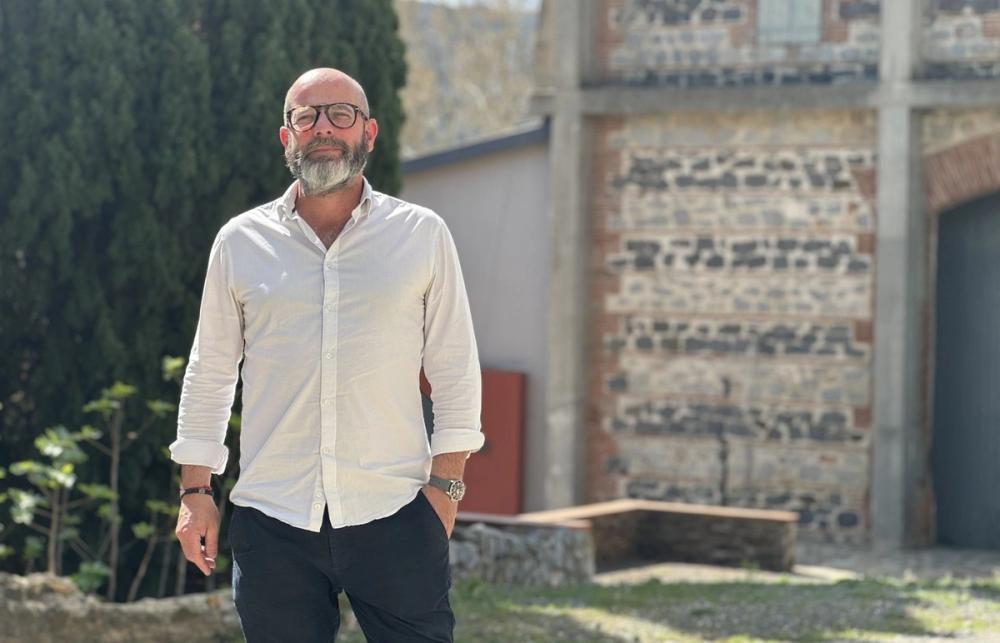
“Vin Doux Naturels is like Catalan Viagra!” – Nicolas Raffy of Mas Amiel
With Roussillon’s black grapes, it seems the jury is still out on Syrah. Grenache Noir, Mourvèdre, Carignan, Cinsault and Lledoner Pelut (hairy Grenache) are accepted to be local grapes. But Syrah is relatively new to the party.
“Plantings of Syrah began to increase in the 1970s,” noted Danjou-Banessy. “We only have one small plot ourselves as it’s not really adapted to the region and grafting has been tough.” Syrah has also struggled in the face of climate change, with Bizeul noting “we’ve lost 30% of Syrah vineyards during these last three years of drought.”
There are certain areas where it works better than others. The communes of Caramany, for example, require at least 40% Syrah in the final blend, but it’s not universal. Nicolas Raffy, in charge of Mas Amiel in Maury, revealed they only use Syrah for their entry level blends. Grenache Noir remains most highly prized for both dry and Vin Doux Naturels. It was also great to see Carignan with naturally restricted yields and even some carbonic maceration widely lauded, especially for its natural acidity as temperatures rise.
White plantings are dominated by Muscat Blancs a Petit Grains and Muscat of Alexandria, being the main ingredients in white Vin Doux Naturels. The white wines that really hit home, however, were those from Macabeu, Grenache Blanc and Grenache Gris. The later in particular a source of great hope for the future.
“Grenache Gris does give more tannin,” noted Danjou-Banessy, “and it’s that extra structure that gives it more of a fresh feel.”
For both dry reds and whites, that freshness was a happy surprise. Remember, this is the hottest region in France, but a mixture of minerality, grape varieties, altitude, garrigue scrub, and progressive cellar techniques mean that over extracting jammy wines are very much…well I was going to say a rarity, but I don’t think I had one that fit that description in the days I was there.
Vin Doux Naturels come in a range of styles and deserve an article all of their own. It’s clear that more needs to be done to help this historic style.
They’re inexpensive, but, like most fortified wines, the question is whether the demand is still there? Is it enough to simply produce a set of world class wines and just expect wine drinkers to continue to buy them? Food matching can be great fun and will help, but maybe there’s another angle?
“Vin Doux Naturels is like Catalan Viagra!” exclaimed Raffy, whose line-up of Maury Doux paired with chocolate cake would truly work wonders towards the end of…ahem…a meal.
Old vineyards for sale
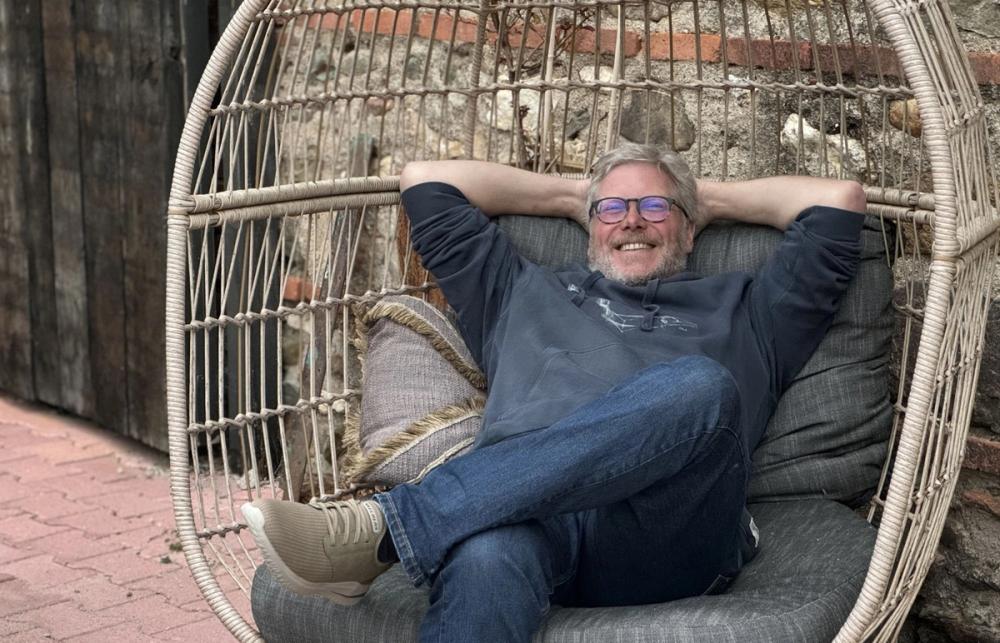
"It really feels like a piece of the New World, but in France.” – Jonathan Hesford of Domaine Treloar
Roussillon has an enviable portfolio of old vines. According to Eric Aracil, over 50% of the vines planted in the region are over 50 years old. These old bush vines contribute to Roussillon’s claim to have the lowest yield of combined PDO and PGI categories in France, at less than 30 hl/ha for dry wines.
This allows for truly unique wines to be made. As Benoit Danjou-Banessy, who manages 120-year-old plots of Garnacha, put it: “You don’t make what you want to make, you make what the old vines give you.”
For some, that also includes a handy help for harvest planning in a changing climate. “It’s great that the deep roots allow resistance to the drought and also the concentration of the berries,” noted Dominique Génot “But it also means production is more stable in terms of both quality and quantity.”
It’s not an universal rule, however, that old vines will produce the best grapes. As Hervé Bizeul put it “a young idiot usually grows up to be an old idiot.” He pointed out that younger plots in Romanée-Conti aren’t seen as lesser. For him, terroir trumps all.
Roussillon remains a very attractive place for young winemakers to set up. Jonathan Hesford and his wife set up Domaine Treloar just under 20 years ago.
“We were moving to France from New Zealand and were looking for an area we could be profitable, but also make our own style of wines,” remembered Hesford. “The price of land here was, and is still, relatively very cheap and you can buy old vineyards with very interesting varieties. It really feels like a piece of the New World, but in France.”
With vineyard prices as low as €8,000 per hectare, even in AOC registered areas, you can see his point.
Adapting to climate change
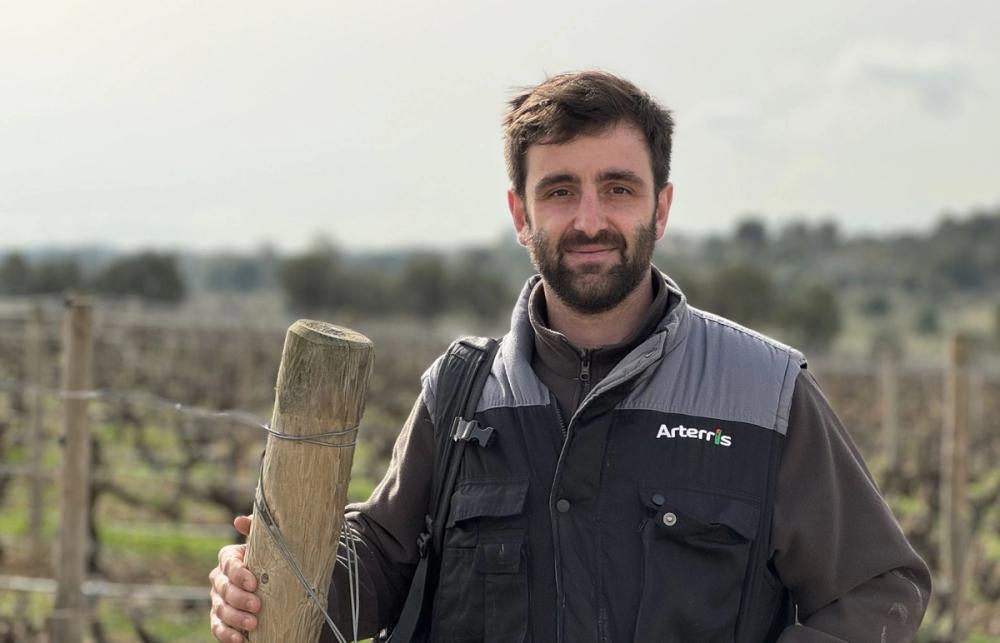
Antoine Lespes of Domaine Lafage – commended for his strides in regenerative viticulture
Climate change is bringing particular pressures.
“We’re the first region in France to really feel it,” continued Bizeul. “I understand that everywhere has its challenges, but if the vines don’t get at least 300mm of rain they won’t survive for long.” With just 240mm of rain falling in 2023 the situation is pressing.
Domaine Lafage was voted highly commended in this year’s Drinks Business Green Awards, largely thanks to the work of impressive head of viticulture, Antoine Lespes.
“Being part of the Regenerative Viticulture Alliance (a Catalan movement started by Torres) has helped us spread the word to our growers and partners. Our studies have targeted the use of drip irrigation around budburst as optimum for the plant, and our work with BioChar has seen our water and compost inputs reduced to just a third for the same vegetative result.”
Further work on reducing erosion with increased root systems of companion plants and planting vines following contours of hillsides has had a marked effect. The increased use of on-site water recycling units, like that being built into the new wine tourism works at Domaine Sol Payré, will need to be spread far and wide.
The warm, windy and dry weather does have a large upside for modern consumer behaviour. The likes of Domaine La Soula has long been known in the UK as embracing organic and biodynamic methods, but they are far from alone. 35% of Roussillon’s vineyards are either certified or in organic conversion. This is an impressive number given the large role co-ops play and the challenges they face in incentivising all their members.
Back at Dom Brial, voted France’s best co-op in 2022 by the Berliner Wein Trophy, Laura Sicard revealed the importance placed on future proofing the business.
“We are fully HVE Level 3 certifed, and also signed up to the Vignerons Engagées programme,” stated Sicard. “10 of our 40 full time growers are also now organic certified which really helps our message.”
For more information on wines and winemakers in this article, please contact Mike Turner via contact pages on www.the-buyer.net
For more information about the Wines of Roussillon, or to get in touch with the CIVR, please contact Celine Bouteiller on celine@otaria.co.uk
Mike Turner is a freelance writer, presenter, educator, judge and regular contributor for The Buyer.
Fancy trying some of the wines from the fabulous winemakers mentioned in this article? They are currently working with the following importers:
Domaine Danjou-Banessy – Cambridge Wine Merchants, Dynamic Vines
Mas Amiel – Caves de Pyrenes, Lea & Sandemann
Domaine Le Soula – Thorman Hunt
Cave Dom Brial – Hallgarten & Novum
Clos des Fées – Yapp Brothers
Mas Llossanes – Currently seeking an importer
Domaine Lafage – Bibendum
Château Saint Roch – Enotria&Coe
Domaine Sol Payré – Currently seeking an importer
Vignobles Terrasous – Sommelier Consultant
Domaine Treloar – Cambridge Wine Merchants
VICA – Currently seeking an importer
